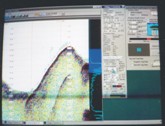




| Environmental | |||||
| Engineering |
| Gps |
| All the information you need to get the best car GPS |
| Seismic |
 Home Home |
 Services Services |
 Methods Methods |
 Uxo Uxo |
 Contact Us Contact Us |
 About us About us |
Geotechnical Services
|
Geotechnical geophysical services are applicable to many types of investigations. Information obtained through geophysical surveys can prove invaluable to the engineer. Whether it’s planning and design of new construction or remediation systems, geophysical data can be a cost effective tool for many types of projects. Velocity analysis of soils for seismic design and determination of subsurface electrical conductivity are two common applications of geophysics for geotechnical purposes. Evaluations of concrete structures and reinforcement, as well as, detection of voids are applications often applied in an urban environment. Environmental projects often require information regarding bedrock depth and properties including the location of bedrock fracture zones.
Usually it is best to utilize more than one geophysical method. The reason is that one method may not work at a particular site due to soil conditions or other factors. Also, multiple methods will provide confirmation and quality assurance of results. Typical methods used by FPM Geophysical & UXO Services include: Key Benefits Typical Objectives
|

